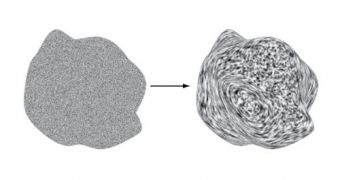Scientists with the Giessen University, Yale University, and the Max Planck Institute for Biological Cybernetics (MPI-BC), in Tübingen, recently took a closer look at how the brain creates the illusion that we are living in a three-dimensional world, and managed to clear some of this mystery.
Experts do know that our eyes are capable of perceiving depth (the third dimension) because they are space apart, and see things from slightly-different perspectives. This difference is used by the brain to create the sensation of a 3D environment.
However, each of the images entering the retinas do so without the depth component, which is lost in the process. But, obviously, the 3D sensation does not disappear, which means that our brain is somehow working towards always presenting the conscious mind with a convincing rendition.
What the international collaboration determined was that certain cells in the visual cortex may play an important role in allowing the human brain to render the environment in three dimensions. This was discovered through the creation of complex 2D patterns.
When test subjects looked at these patterns, the aforementioned cell populations were simulated in such a manner that the patterns appeared to represent actual 3D images. These experiments revealed those specific cells as playing an important role in augmenting our vision.
“We created the images by taking random noise and smearing it out across the image in specific patterns. It’s a bit like finger painting, except it's done by computer,” Giessen University psychology professor and study team member Roland Fleming explains.
“The way the texture gets smeared out is not the way texture behaves in the real 3D world. But it allows us to selectively stimulate so-called ‘complex cells’ in visual cortex, which measure the local 2D orientation of patterns in the retinal image,” he goes on to say.
Researchers David Hubel and Torsten Wiesel won the 1981 Nobel Prize in Physiology or Medicine for the discovery of complex cells. They are especially well suited for the processing of image boundaries and edges. However, nothing was known of their role in 3D processing until now.
“It’s a kind of aftereffect, a bit like when you stare at a waterfall for a while, adaptation makes things that are stationary look like they are moving in the opposite direction. Except here, the aftereffect makes the noise look 3D,” Daniel Holtmann-Rice explains.
“We didn’t think it was going to work. It was so exciting to get the first data where we could clearly see the predicted shapes emerging in the participants’ settings,” adds the scientist, a PhD student at Yale and a member of the research team.

 14 DAY TRIAL //
14 DAY TRIAL //